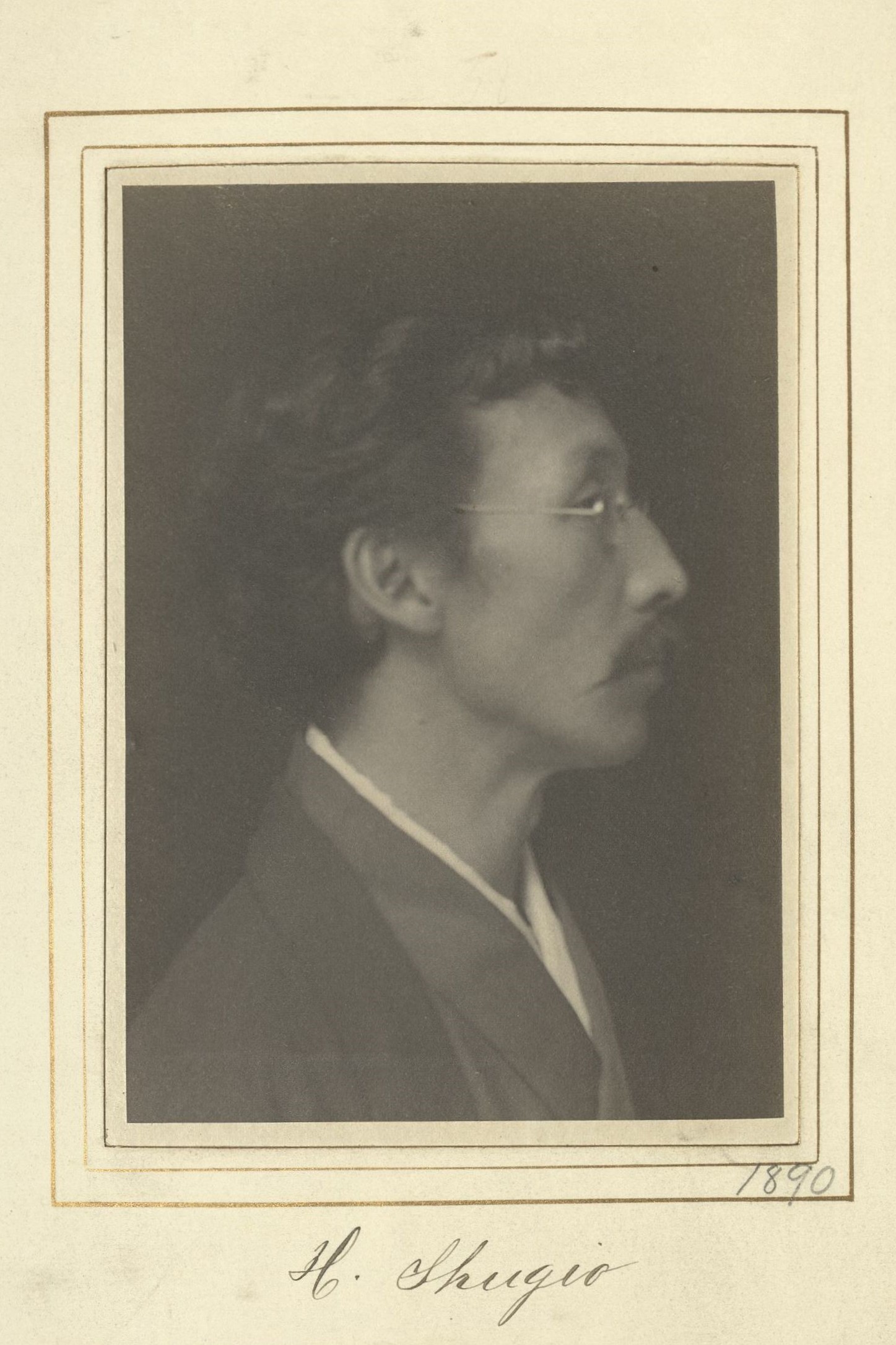Art Historian
Centurion, 1890–1927
Born 27 March 1853 in Saga, Saga Prefecture, Japan
Died 21 July 1927 in Tokyo, Japan
Proposed by Edmund C. Stedman and John La Farge
Elected 3 May 1890 at age thirty-seven
Supporter of:
Century Memorial
One of the Century’s gratifying achievements has been its service in linking, through its active membership, the intellectual West with the intellectual East. Hiromichi Shugio was the most cosmopolitan of Japanese, a scholar of rare knowledge and judgment in matters both of Far Eastern and Occidental art. At Paris, in 1900, his expert services were sought on foreign juries. Both Professor [Edward S.] Morse and Sir William Van Horne, the chief collectors of Japanese potteries outside of Japan, were accustomed to defer to Shugio’s judgment on close questions of identity. In personality Shugio was quiet, gentlemanly, unobtrusive, but of rare companionable qualities; the type of the refined scholar of Far Eastern tradition.
Shugio came of an important family in Japan, and grew up in close association with some of his country’s leading statesmen. He came as a boy to the United States and went to school at Middletown, Connecticut, where he was so thoroughly taught in English that for the rest of his life he spoke the language fluently and wrote it with distinction. In 1893 Shugio was an important figure among the representatives of Japanese art at the World’s Fair in Chicago. Returning to Japan, he was appointed one of the three Imperial Commissioners in connection with the extraordinary exhibit of the art of that country at the Paris Exposition of 1900. In 1904 he represented important art interests at the St. Louis Exposition; in 1919, at London, he was again associated with the Japanese exhibit at Sheppard’s Bush, and again figured prominently with the representatives of the art of Japan at the Panama Exposition in San Francisco. It was a pleasing picture of friendship breaking the barrier of race that the wrecking of his house at Tokio [Tokyo] in the earthquake of 1923 promptly elicited cables of financial help from his New York friends, and that Shugio never failed, on each anniversary of the disaster, to write a letter of grateful appreciation.
Alexander Dana Noyes
1928 Century Association Yearbook

